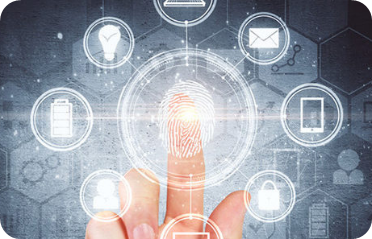Biometrics are used to identify a person by comparing their physical or behavioral characteristics with what is stored on file. These traits include fingerprints, facial photos and even the way someone writes.
Although it is possible to duplicate a password, it’s much harder to fool biometrics. However, security and privacy concerns remain.

Fingerprint Scanners
Fingerprint scanners are one of the oldest types of biometric identification technology. They have a number of practical applications in everyday life, including security systems that replace passwords for computers and phones and secure areas in buildings. Fingerprints are detailed, nearly unique, and difficult to change, which makes them a great long-term marker of identity. Optical fingerprint scanners create a digital image of a finger by shining light through the fingertips and measuring the way ridges and valleys reflect it. Capacitive scanners use miniature built-in capacitors that store electricity and discharge it when a finger touches the sensor. Fingerprint scanner software compares a new scan to a database of previous fingerprint templates.The system looks for recognizable characteristics like where a ridge ends or splits into two and uses it to match the current scan to the stored ones. The process reduces error rate and the time required to identify a fingerprint. It also allows users to swipe a finger across the scanner quickly to minimize processing power.
Voice Recognition
Voice recognition is an incredibly powerful technology. It involves identifying a specific speaker and translating their words into text or commands. The majority of us have interacted with voice recognition on a daily basis when using a virtual assistant, home hub device or phone. This technology is becoming increasingly popular as the need for efficient customer service increases and businesses seek to streamline their internal processes. In the workplace, voice recognition is often used for dictating meetings or recording important information to be transcribed into documents. It saves time and ensures everything is captured accurately.
The technology is also useful for disabled people who struggle to use a keyboard and mouse. This assists them to write faster and more productively than if they were typing by hand or using a standard word processing application. It’s also been found to be helpful in enhancing the lives of people with dyslexia. This helps them become more fluent writers, reducing the stress of trying to correct their work after writing it.
Home Automation
Many home-automation systems also use a person’s physical and behavioural characteristics, such as their face, fingerprints, gait, palm vein patterns, and the structures in their eyes (iris or retina). These are highly distinctive, with very little overlap between individuals, making them attractive to systems that need to quickly distinguish one individual from another.
However, these systems aren’t infallible. They can be fooled by impersonation or obfuscation attacks that attempt to evade the system’s recognition algorithms. It’s important for organizations considering biometric technology to first determine what specific problem they hope to solve and whether a proposed system is essential for doing so. In addition, privacy solutions must be incorporated into the design of a system from the outset rather than added later. That’s why it’s essential for government and private-sector organizations to conduct a privacy impact assessment before implementing any biometric technology. This will allow them to identify the strengths and weaknesses of the technology and develop safeguards to protect people’s privacy.